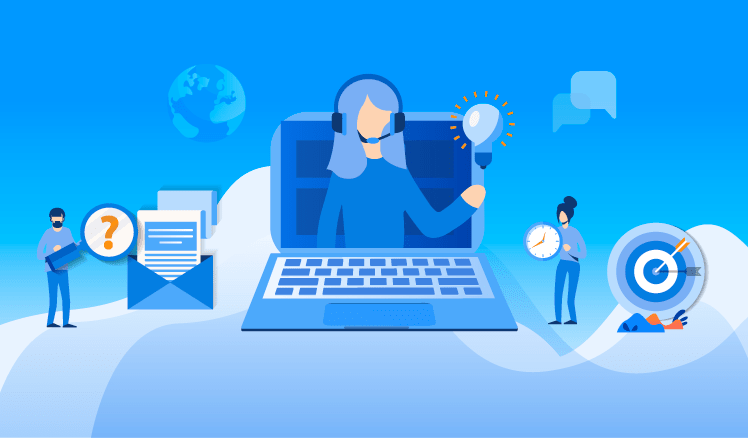A technology help desk is designed to be an essential point of interaction amongst an IT firm and its clients. As per ITIL, a technology help desk is ideally the SPOC (single point of contact) between the users and the service provider for day-to-day events.
A typical technology help desk oversees service requests and service interruptions alongside taking care of client correspondences for issues such as service blackouts and modifications to the services rendered.
The intricacy of present-day firms, and the need to make continuous cost savings, implies that help desk efficiency and effectiveness depend heavily on utilizing fit-for-reason help desk platforms to back to help desk staff.
A technology helpdesk typically has an extensive range and is intended to give the client one solution for all their IT needs. In this article, we will see where the concept of a technology help desk originated from and the advantages of these platforms.

Where Did the Concept of a Technology Help Desk Originate From?
The IT helpdesk concept came about in the late 1980s as a function to help tackle IT issues. It was a profoundly specialized function focused on IT rather than the clients. Initial IT helpdesks didn't have time-based marks or SLAs for problem-solving.
It wasn't until ITIL came about in the 90s and captured ITSM best practices, that the idea of the client-driven IT help desk started to emerge. The help desk was viewed as a fundamental piece of "overseeing IT functions as a service."
During the mid-90s, Iain Middleton of Robert Gordon University revealed that value was obtained from proactive responses to client issues and the platform's exclusive position interacting daily with staff and clients.
Data acquired about technical issues, and client preferences became significant in the planning and advancing IT services. With the publishing of the 2nd version of ITIL practices in 2001, the help desk function and its role in incident management became one of the critical components of IT service processes.
As the decade progressed, globalization alongside expanding mounting pressure to decrease IT working expenses drove numerous firms to consolidate IT Service Desk capacities, with many using external partners to help staff them. Subcontracting IT service desk capacities prompted further fine-tuning of processes and market development for technology helpdesk software.
Present-day tech trends, including cloud benefits, the widespread utilization of external instruments in IT, and advancements in monitoring functions, have prompted the integration of independent helpdesk frameworks into more extensive It service management products.
As organizations look to revolutionize further, the technology help desk is once again evolving to become more advanced again to become more corporate-centered with better responsiveness of data and business procedures. In most scenarios, it has turned out to be an integrated component of day-to-day activities.
What Are the Advantages of a Technology Help Desk?
A Technology HelpDesk is Scalable and Can Save On Costs
Expense savings and adaptability are the two most regular advantages that organizations are looking for when they get a technology help desk. A help desk that is appropriately staffed and all-around well managed can deal with most of the routine IT functions.
A help desk gives the business a relatively low-cost alternative for moving easy tasks from costly mechanical teams, allowing them to zero in on functions more suited to them, which will boost the company's value.
A Technology HelpDesk Can Indicate Future Problems
On account of the bulk of requests and issues that the help desk handles, with the correct information and devices for assessing trends and patterns, the business can utilize the help desk as a monitoring device to recognize and proactively deal with service issues.
A technology help desk has a warning system that can proactively deal with issues and indicate shortcomings in your system that could threaten your business in the future.
A Technology HelpDesk Satisfies Customers
A help desk is the beginning for some essential IT services and tasks, and, as such, it is regularly the essential interface between clients and the IT services they use.
Observing this interaction gives significant insight into client fulfillment, sentiment towards services and un-addressed issues that might be tended to by IT services later on.
Final Thought on Technology HelpDesk
To sum it all up, technology help desks have come a long way since the days of old to what they are today, as we have illustrated above. These platforms are very crucial for any IT firm looking to improve productivity and have better relations with their clients.